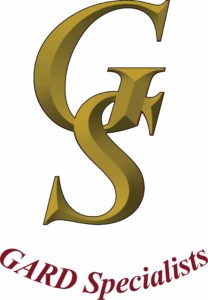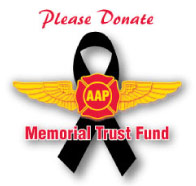In light of the recent tragic loss of our Fighters burned over on the Yarnell hill fire in Arizona there has been much speculation and conjecture on “what would have happened if airtankers had been on the scene”. As in any accident/incident investigation speculation and assumptions must be disregarded. Conclusions must be based only on established facts determined by trained investigators after exhaustive research is completed. The use of counterfactuals or what might have been is an exercise in futility. Looking back at our history though provides us with examples where air support from fixed wing airtankers and firefighting helicopters did make the difference.
My first example occurred in 1987; The Lauder Fire caused by arson resulted in the burn over of a Helitac team near Ukiah California. I was a first year Tanker Captain in an S-2 based at Redding California. At breakfast about 9 AM my beeper went off. I took one more bite, paid the bill and headed for the base. Upon my arrival Chief Reid Steinbeck meet me at my plane. He handed me a dispatch and said “a helitack crew has been burned over, go get em”. I launched without the benefit of a proper preflight. It was about a 30minute flight in the old recip and I arrived. What I saw as I rounded the last mountain will be etched into my memory forever. An intense fire burning up a 70% slope in heavy brush and tall snags with what looked like a small camp of silver tents about two thirds up and in the right flank. The tents were covered with fire retardant but they were in an area that was still burning. CDF Helicopter Pilot Nick Mullet was dropping water on the crew while continuously talking to them trying to reassure them and calm them down. The fire had started early in the morning well before tanker time. Just by chance S-2 Tanker Pilots Bob Valette and Doug Baker were each listening to their scanners at home and heard a desperate situation developing. Both of them called ECC and asked if they could help. They were told to get to their tankers and proceed to the fire. When they arrived the crew had already deployed their shelters. Without any time to clear a safety zone they went through the flames and into the burn as a last resort. The Air Attack Officer overhead had been the Helictack Crew’s Leader the previous year and was overwhelmed by watching his old crew now in the burn making desperate pleas for help. Pilot Baker took charge of the air operation talking directly with the Crew Leader. Desperate transmissions from the ground like “we’re dying” and “can’t breath” prompted Doug to take immediate action. Doug and Bob made the drops that gave the crew a safety zone and Nick, dropping water from his helicopter, cooled them off as they lay in a bed of hot coals. They had completed the job just before I arrived. I marveled at how the tankers had made the supportive drops. It looked as though at least some of the drops were made just prior to entering the convection column on that steep slope over a forest of 100-foot tall dead snags from a previous fire. A very risky action to undertake but without that air support it is unlikely that any of the Helitac crew would have survived. One Firefighter, Denis Lee Cullin, perished in his fire shelter.
The second example happened the same year on the Crank Fire. A lightning caused fire near Canby California had burned about five acres. I was dispatched to the fire and on arrival I was cancelled and diverted because the fire was contained. When I returned to Chester Tanker Base for a reload and fuel I learned that the Crank Fire was now out of control and had engulfed the crews on scene. A sudden lightning storm passed over the fire throwing embers and firebrands in every direction. The intense winds and extreme fire behavior put the crew right in the middle of the new fire. They abandoned their fire trucks and crew busses as the intense flames enveloped them. Good leadership from the Crew Captains was key in getting everyone out onto a two-track road and into their shelters. We were dispatched to the incident from Chester Tanker Base, too far away to arrive in time. One CDF Helicopter, piloted by Garry Schooler dropped buckets of water through the smoke continuously in what can only be described as extreme fire behavior. Once again I arrived after the worst of it was over. I could see the crew with their shelters draped over their heads walking out of the fire down the narrow dirt road. The CDF Copter continuously supported their egress with bucket drops. It had been a very close call. The entire event was captured on film by the ORE Team and is still used today for training Firefighters.
The third example was a Park Service Crew at a fire in Yosemite. Park rules dictated that the fire should only be fought with hose lays and hand tools. No dozers or airtankers would be used in the Park unless a “threat to life” situation developed and that is precisely what happened. A Park Service Crew made up with Firefighters that had never worked together before was inserted to construct a hand line up hill supported with a hose lay from a pump down in the creek. The night shift constructed the line and stopped for a brief rest with part of the crew trying to get some sleep. They were rudely awakened by a report from lookouts that their hose lay had been burned over and that the fire had jumped the line and was closing on their position. The crew leader ordered that a safety zone be constructed immediately for a shelter deployment. Because a “threat to life” situation now existed airtankers were dispatched. Two S-2 airtankers from Columbia AAB were launched on their position. As the fire advanced the Firefighters knew that they would have to ride it out in their fire shelters. They had their shelters ready and jettisoned their chainsaws, flares and gasoline into the brush as far away from their safety zone as possible. With the head of the fire now in sight converging on the firefighters The S-2s piloted by Jimmy Dunn and Gary Nagel arrived on scene. They dropped their retardant just in front of the hastily constructed clearing at maximum coverage level. The safety zone was now secure enough that the Firefighters did not have to get into their shelters. The fire hit the retardant and burned around them. My Nephew Brent had been one of the Park Service Firefighters that would have been burned over had it not been for the action taken by the tankers. He is the only reason that we learned how important those drops had been. He called me and gave me the tanker numbers and asked if I could please thank the pilots for him. I did.
The fourth example was at the vision fire near Point Reyes California. Some kids had a small campfire going on Mt. Vision in late October. Lack of a wetting rain and dry Northeast winds combined making burn conditions extremely dangerous. Embers escaped the fire pit and ignited the brush on the ground. The fire climbed rapidly into the forest canopy developing into a firestorm throwing embers and firebrands far ahead of the original fire. The high winds drove the fire rapidly toward a group of homes that were surrounded by brush and Douglas fir trees. Marin County Fire Captain Tim Thompson took an engine down a narrow road, into the community to try and evacuate the residents. Just as they arrived the fire hit. The heat was so intense that the taillight lenses on the fire truck were melting. At that very moment an old DC-4 Air Tanker piloted by Captain Dean Talley arrived on the scene and salvoed 2000 gallons of retardant directly on their position. Needless to say they were all very relieved by Dean’s quick action and precision drop that prevented them from being burned over. Firefighters are trained to fight fire without expectation of having air support. Too many variables exist to insure that aviation assets will be overhead at exactly when a critical situation develops. It is more effective to use airtanker drops to secure the line and create “safety zones” making ground firefighters safer in the first place. This is especially true during “indirect attack” when Firefighters are constructing line with large stands of fuel between them and the fire.
In over 30 years of being an Aerial Firefighter I have seen many things. I have seen Firefighters saved by air support and I have seen Firefighters both on the ground and in the air die on a fire. All firefighting contains elements of danger. Every effort is made to mitigate that danger but it is the unexpected that turns a routine event into life threatening situation. It is a fact that Air Tankers and Fire Fighting Helicopters have rescued Firefighters on the ground many times over the years. It is also a fact that the effective use of Aerial firefighting assets in building and supporting line has undoubtedly stopped critical situations from developing in the first place.
Jim Barnes











Speak Your Mind
You must be logged in to post a comment.